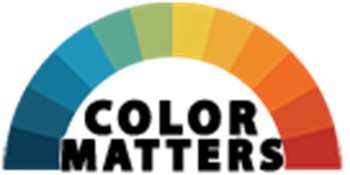More amazing facts about color. You'll find unusual snippets of information from the world of nature, vision, psychology, science, business, brands, and the food we eat.
The colors of the Olympic logo
The official Olympic logo was created by Baron Pierre de Coubertin in 1913. It consists of five interlacing rings of blue, yellow, black, green, and red. At least one of these colors is found in the flag of every nation. According to the Olympic Charter, the five-ringed symbol "represents the union of the five continents and the meeting of athletes from throughout the world at the Olympic Games: Europe, Asia, Africa, the Americas and Oceania. On the other hand, Pierre de Coubertin never said nor wrote that the colors of the rings were linked with the different continents.
Blue blooded bugs
A spider's blood turns blue when exposed to oxygen.
"Blue" Jeans
Only half the denim in your blue jeans is dyed blue. The other half are white weft threads.
The Famous Fireballs Mystery
Picture this: Hundreds of red, pink and orange fireballs soar up into the sky from the he Mekong River in northern Thailand. This occurs every year on the first full moon night of October, which coincides with the end of Buddhist Lent
According to one theory, flammable natural gas deposits in the riverbed cause the colorful fireballs. These gases are released when the sun heats the decomposing plant and animal remains on the bottom of the Mekong and are drawn to the surface by the moon's gravitational pull.
Local residents have long embraced the legend that the flames come from a mythical Naga, or serpent, in a gesture of homage to the Lord Buddha. They are seen regularly each year around the end of Buddhist Lent and attract hordes of tourists.
A color that made history
In the ancient world of the Aztecs, red dye was considered more valuable than gold. The bright red colorant required the labor of hundreds of subjects combing the desert in search of its source - the female cochineal beetle. A pound of water-soluble extract required about a million insects. (By comparison, back in the days of the Roman Empire, a pound of royal purple dye required four million mollusks.)
After the arrival of Cortez in the 1500s, the Spaniards traded the dried remains of this insect as a colorant that dyed items a brilliant crimson. Cochineal red was a stronger dye than ever before - and a color that no one could duplicate. Europeans used it for fabrics and illumination in addition to cooking. In the years that followed, Michelangelo used it in paintings, the British for redcoats and the Canadians for their Mounted Police coats. It is thought that the first U.S. flag made by Betsy Ross had cochineal red stripes. Today, less expensive aniline dyes have replaced it, but it is used as a food coloring and is approved by the FDA as a natural colorant for food, drug and cosmetics. In fact, some brands of fruit juice use this red bug juice as a colorant.
The story of Cochineal red is even more fascinating. Europeans were never told of its insect origin. In reality, the insect looked so much like a seed, that the Spaniards traded it as grain. For almost 300 years, they perpetuated the notion that ?dyed in the grain? was their special process for this permanent dye that never faded. And that's the source of the English term "ingrained."
Source: Wikipedia
The color of the Universe (much blander than before)
Scientists at Johns Hopkins University announced in January that the color of the universe was pale turquoise Three months later, they admitted that they made a mistake in their original calculation and that the true color of the universe is beige. Thenew color is now called "cosmic latte."
What went wrong? And how did they come up with turquoise in the first place? First of all, scientists Karl Glazebrook and Ivan Baldry gathered light from galaxies out to several billion light years. Next, they broke the light into the various colors of the spectrum. After this, they averaged the color values for all the light. This basic data about the average color of the universe was correct. The problem arose when the numerical data was converted into a color compatible with the perception of the human eye. The computer picked a nonstandard white from its electronic palette and mixed it with the other colors to come up with the turquoise. It was uncovered by color engineers who checked their data.
Glazebrook said "This is science. We're not like politicians. If we make mistakes, we admit them. That's how science works.''
Beyond green ketchup: Heavenly blue potatoes
Sky blue french fries from Heinz were the result of a market survey. Kids were asked what would make them eat more french fries and blue was the winner.
However, they were wrong about french fries. They failed and were pulled from the shelves.
"Kids already like the plain french fries," said Marilyn Raymond, director with New ProductWorks, a Michigan-based product marketing consultancy. "Why try to make them more friendly to kids?"
In the meantime, sales of Heinz's other crazy colors -- the green, purple, and pink ketchup -- hit the bull's eye for the company.



